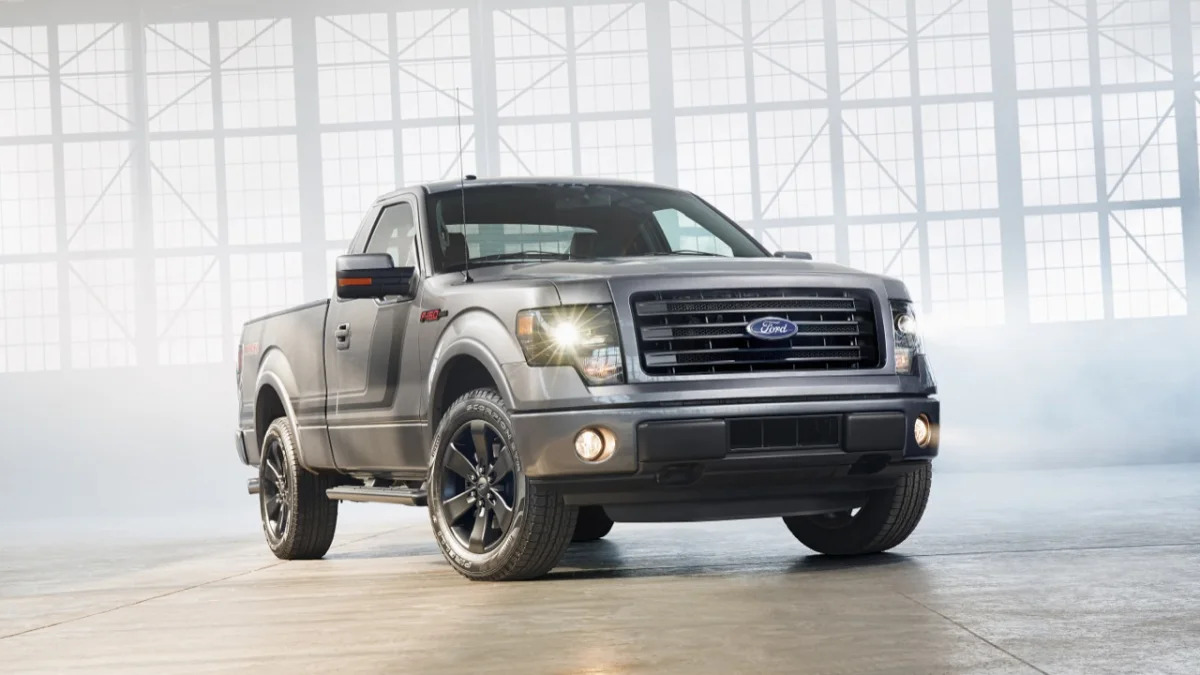As car companies have morphed into multinationals, it has gotten difficult to discern what qualifies as an American car.
Walking around a car show in Washington D.C. earlier this year, Frank DuBois, a professor of international business at nearby American University, couldn't help but notice the "Made In America" stickers plastered all over a Toyota Tundra pickup truck. The stickers indeed are accurate. Toyota assembles the Tundra in San Antonio, Texas, and the vehicle's engine and transmission are produced in the United States, as well. But in DuBois' view, the advertisements provided a simplified answer to a complicated question.
Check out: Most American-Made Cars of 2021
In the automotive realm, the practice of buying American is one that's open to interpretation. Does buying American mean buying a Chrysler? Because the company has merged with Italian-owned Fiat. Does it mean buying a Ford Fiesta assembled in Mexico? A BMW assembled in South Carolina? A Tundra built in San Antonio, with much of its research and development conducted in Japan?
DuBois developed the "Made In America Auto Index" to help sort through the answers to those questions.
As car companies have morphed into multinational corporations that operate on a global scale, it has gotten more difficult than ever to discern what qualifies as an American car. In his analysis, DuBois ranks vehicles in seven separate categories, weighing factors such as assembly locations, amount of domestic content included, where research and development is conducted and overall economic impact in the US.
Ford's F-Series pickup line and the Chevrolet Corvette Stingray rank as the 'Most American' cars in this year's index, the results of which were released Thursday. Both cars scored an 87.5 in the 100-point index.
Tesla Motors is ranked for the first time, debuting in 13th place with a 77.5 overall ranking.
Results were both predictable and surprising: Vehicles produced by General Motors ranked as eight of the Top 10 most-American models, and cars produced by the traditional Big Three took the top 32 positions among the 318 models ranked. Vehicles like the Honda Odyssey (78.5) and Toyota Camry (78.5) – both assembled in the US – also scored well, far ahead of models like the Ford Fusion (34) and Chevrolet Spark (16). (Full rankings and methodology here).
Tesla Motors is ranked for the first time in the 2014 edition of Made In America Index. It debuts in a tie for 13th place with a 77.5 overall ranking. The Model S wins points for having its transmission produced in the US, having research and development in the US and having its labor focused here, and once Tesla manufactures batteries in the US, DuBois said Model S is poised to rise in the rankings.
But even the "Most American" cars, the analysis underscores, aren't entirely American.
DuBois gives weight to where the engine and trans are built, final assembly points and benefits to the US economy.
"What you think about with this is, 'Is there truly a car anywhere in the world that is 100-percent local content?," DuBois, a professor at American's Kogod School of Business asked. "Maybe a Bentley or Ferrari, something at the upper echelon. But what this really shows is this is a very globalized industry, and a lot of strategies companies are using are to centralize production of components. It's much more efficient to produce them in a single facility than disperse them all over the place."
DuBois' method gives weight to the locations where the engine and transmission are built, final assembly points and benefits to the US economy, such as where profits are returned. He believes his method is a more accurate measure than the American Automotive Labeling Act information that appears alongside a new car's window sticker.
Data collected through that law, he said, has limitations. Manufacturers don't differentiate between US and Canadian products, the law allows automakers to round up from 70 to 100 percent to calculate domestic content, and in some cases, cars with little US content may be allowed to use 'Made in America' labels if they're made on the same lines as cars with high US content.
"So consumers have to be careful," DuBois said. "I tell them to look at the VIN decoder, and you can tell where the car was finally assembled."
Underlying the particulars of each model, he reminds Autoblog that the biggest takeaway from his analysis was that – for better or worse, depending on your perspective – more companies are manufacturing automotive parts or assembling cars in the US because it has become an inexpensive location to do so. For example, General Motors moved production of the Chevy Camaro from Canada to Lansing, Michigan, and BMW is expanding its presence in South Carolina, from which it will even export some cars to Germany.
"I think the great story about the American auto industry is we didn't give it up for dead when we could have, and it's come back stronger than ever," DuBois said.


















Sign in to post
Please sign in to leave a comment.
Continue